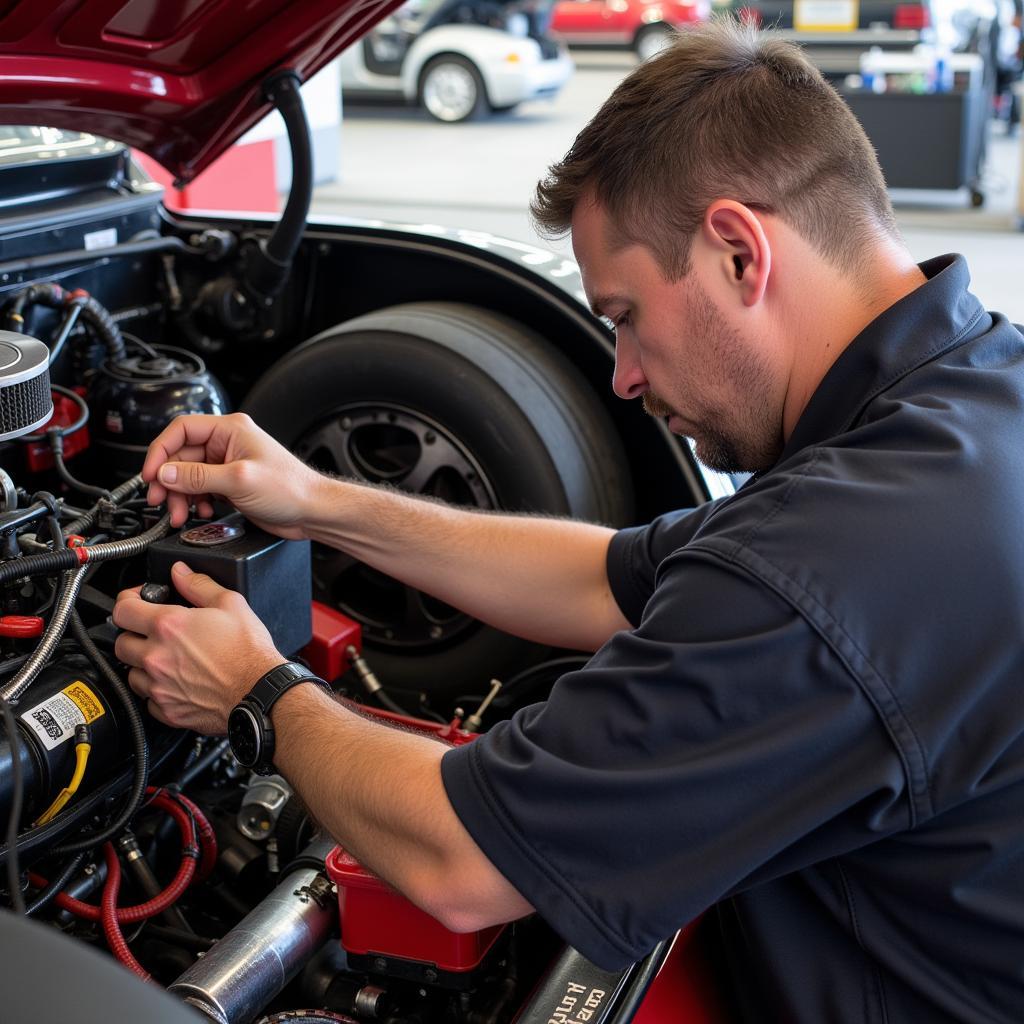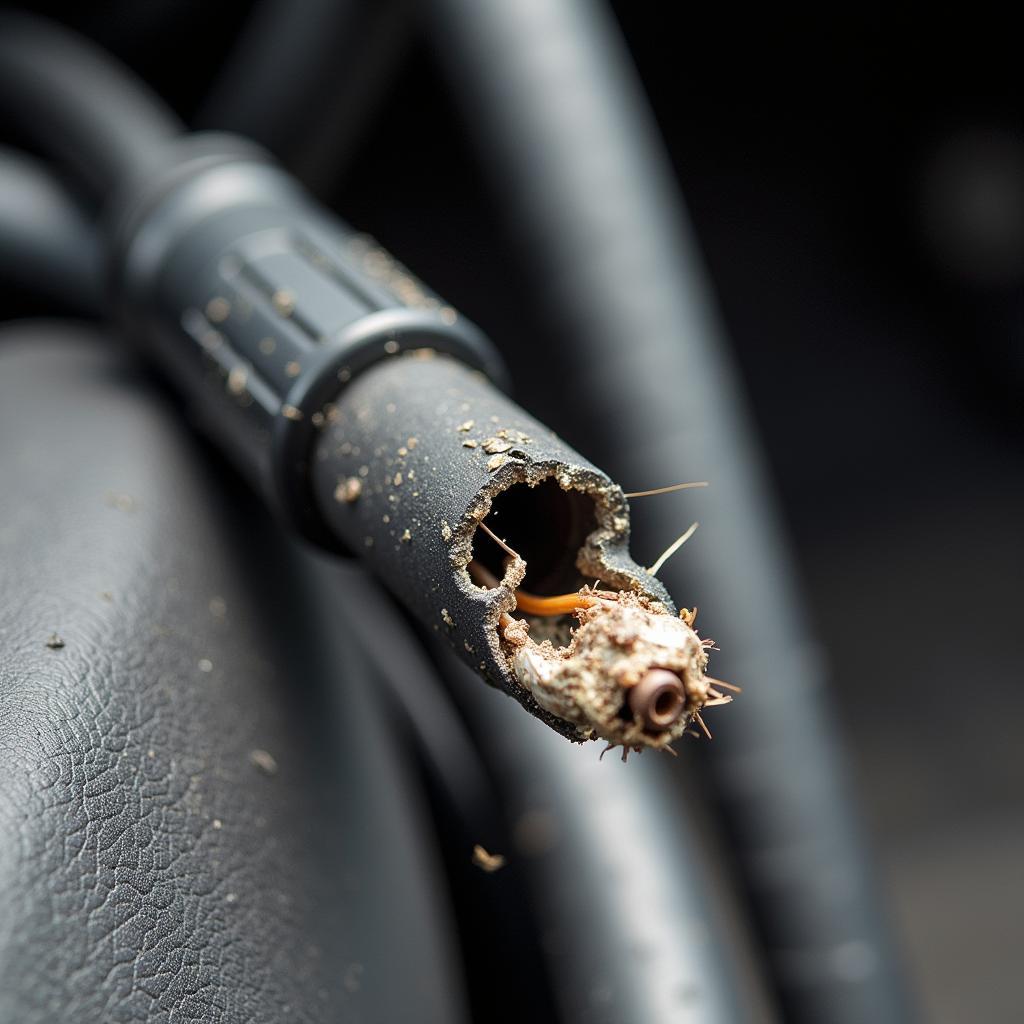The Problem Child Drag Racing Car. Every team has one, or has had one. That car that just won’t cooperate, the one that throws a new tantrum every time you think you’ve got it figured out. This article is dedicated to helping you diagnose, troubleshoot, and ultimately conquer the demons plaguing your high-performance machine.
Understanding Your Problem Child: Diagnostics are Key
Before throwing parts and money at the problem, a systematic diagnostic approach is crucial. Think of it like a doctor treating a patient – you don’t prescribe medication without a proper examination. Start with the basics:
- Fuel System: Check fuel pressure, injectors, and fuel pump. A lean mixture can lead to detonation and a rich mixture can cause power loss.
- Ignition System: Inspect spark plugs, wires, distributor (if applicable), and coil. A weak spark can cause misfires and poor performance.
- Compression Test: This will tell you the health of your engine’s cylinders and identify potential mechanical issues.
- Data Logging: If your car is equipped with a data logger, analyze the data for anomalies in RPM, air/fuel ratio, boost pressure, and other critical parameters.
Common Issues and Solutions: Tackling the Usual Suspects
Some problems are more common than others in drag racing cars. Here are a few usual suspects and how to address them:
Inconsistent Launches: Getting Off the Line Cleanly
- Tire Pressure: Incorrect tire pressure can drastically affect traction. Experiment to find the optimal pressure for your setup and track conditions.
- Suspension Setup: A poorly tuned suspension can lead to wheel hop and wasted power. Ensure your shocks, struts, and other suspension components are working in harmony.
- Clutch/Torque Converter: A slipping clutch or malfunctioning torque converter can rob you of precious horsepower at launch.
Mid-Track Stumble: Maintaining Momentum
- Ignition Timing: Incorrect ignition timing can cause hesitation or stumbling at higher RPMs.
- Fuel Delivery: Ensure your fuel system can keep up with the demands of your engine at full throttle. A larger fuel pump or injectors might be necessary.
 Checking Tire Pressure for Optimal Launch
Checking Tire Pressure for Optimal Launch
Tuning Troubles: Finding the Sweet Spot
- Dyno Tuning: Professional dyno tuning is essential for maximizing performance and ensuring the engine is running safely.
- Air/Fuel Ratio: A proper air/fuel ratio is crucial for both power and engine longevity. Monitor your A/F ratio and adjust your tune accordingly.
Electrical Gremlins: Tracking Down the Phantom Issues
- Wiring Harness: Inspect your wiring harness for loose connections, damaged wires, and proper grounding.
- Sensors: Faulty sensors can send incorrect information to the engine control unit (ECU), leading to performance issues.
Expert Insights: Words from the Pros
“Don’t underestimate the importance of data logging,” says renowned drag racing tuner, John Miller. “It’s like having a window into your engine’s soul, revealing hidden problems you might otherwise miss.”
“Consistency is key in drag racing,” adds veteran driver, Sarah Johnson. “Once you find a setup that works, document everything meticulously so you can replicate it.”
 Inspecting Wiring Harness for Electrical Gremlins
Inspecting Wiring Harness for Electrical Gremlins
Taming the Beast: Bringing it All Together
Dealing with a problem child drag racing car can be frustrating, but with a methodical approach and a little perseverance, you can transform it into a consistent winner. Remember to diagnose systematically, address common issues, and seek expert advice when needed. Don’t give up – the thrill of victory is worth the challenge.
Need help taming your problem child? Connect with Autotippro for expert advice and support. Call us at +1 (641) 206-8880 or visit our office at 500 N St Mary’s St, San Antonio, TX 78205, United States.
FAQ
- What’s the first step in diagnosing a problem child drag car? Start with the basics – fuel, ignition, and compression.
- How can I improve my car’s launch? Check tire pressure, suspension setup, and clutch/torque converter operation.
- Why is my car stumbling mid-track? Potential culprits include ignition timing and fuel delivery.
- Is dyno tuning necessary? Yes, professional dyno tuning is essential for optimal performance and engine safety.
- How can I troubleshoot electrical problems? Inspect the wiring harness and sensors.
- What’s the most important thing to remember when dealing with a problem child drag car? Be patient, persistent, and methodical in your approach.
- Where can I get expert help with my drag racing car? Contact AutoTipPro at +1 (641) 206-8880 or visit our San Antonio office.







Leave a Reply